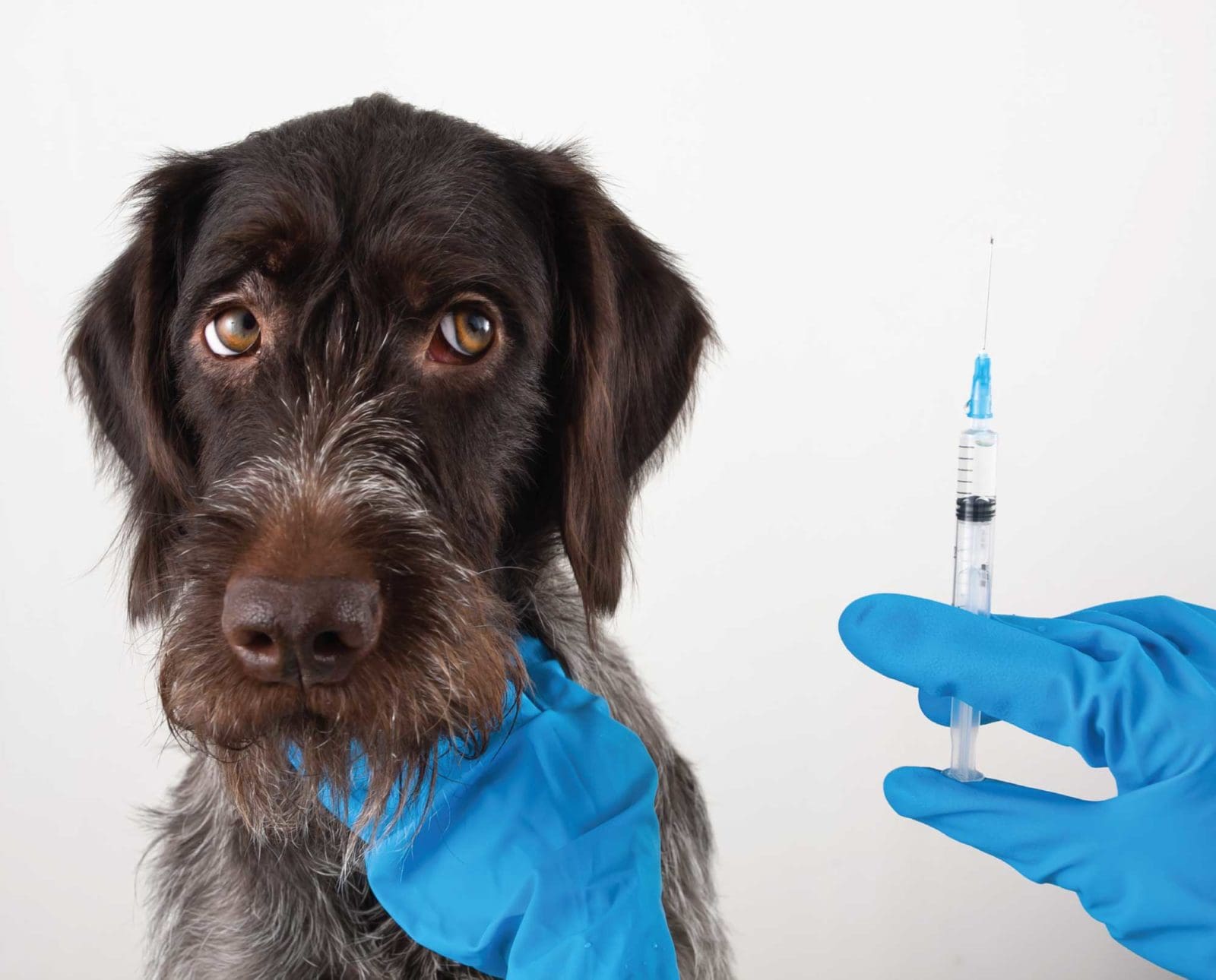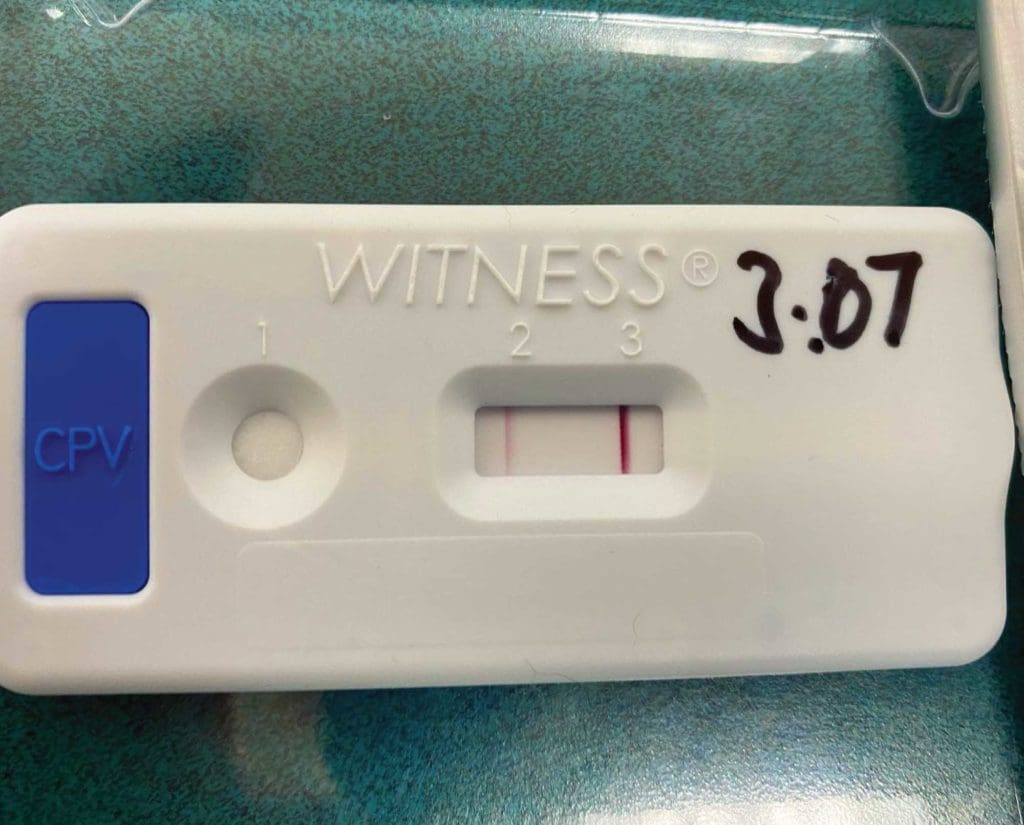Home » Hunting Dogs » Canine Parvovirus: Protecting Your Dog Against Parvo
Canine Parvovirus: Protecting Your Dog Against Parvo

Parvo, a deadly and preventable virus, is every dog owner and veterinarian’s greatest nemesis
This summer, reports of a strange virus sickening dogs in the upper peninsula of Michigan made national news. Further testing at the Michigan State Veterinary Diagnostic Lab revealed this was not some new disease or variant, but an old, well-known foe: parvovirus.
Listen to more articles on Apple | Google | Spotify | Audible
Parvo is widespread throughout the world and most dogs will be exposed to it at some point (if not several times) in their life. I’m not joking when I say that some dogs will see this virus daily, especially if you’re a frequent dog park visitor. Different variants exist, but the most common variant circulating in North America remains canine parvovirus-2c (CPV-2c).
What is parvo?
Parvo is a virus that affects canines causing massive damage to the intestinal tract resulting in vomiting and diarrhea that’s often bloody in nature. It also causes lethargy and numerous secondary concerns such as dehydration, electrolyte changes, protein and blood pressure shifts, hypoglycemia, and even seizures.
Parvo can strike swiftly. Oftentimes, dogs with parvo act 100 percent normal that morning and are on death’s door a few hours later. It’s extremely pathogenic and, sadly, almost always fatal without treatment. It is highly contagious and I personally have watched it rip through entire litters, kennels, and neighborhoods. Survival with treatment can reach about 90 percent, however, these cases often require extensive critical care, overnight hospitalization, and can cost thousands of dollars in veterinary care.
Oftentimes, dogs with parvo act 100 percent normal that morning and are on death’s door a few hours later.

How does parvo spread?
Parvo is extremely good at spreading through environments. The most common transmission methods of parvo are direct dog-to-dog contact and contact with infected feces or vomit. Very little fecal material is needed to spread the virus to other dogs or into the environment. This is one of the many reasons it’s important to pick up your pet’s poop in public areas. The soil itself can become contaminated as well as bedding, people’s shoes or clothing, and porous surfaces.
Infected dogs have the virus throughout their hair and feet. They easily spread it through their regular daily movements. Even items such as toys, kennels, leashes, and bowls can help spread the virus. People handling suspected parvo cases need to take great care to wear gloves and disinfect or change their shoes and clothes before handling other dogs. The virus is resistant to freezing, severe heat, humidity, and even dry spells. Plus, it can be found in contaminated soil for over seven months.
Who is at risk of contracting parvo?
Dogs who are not fully vaccinated for parvo are most at risk at contracting the virus. Although it’s most common in dogs under the age of six months, dogs with sub-par immunities are also susceptible. I treated numerous parvo cases this year; a large number of our cases were in dogs over six months of age. I even had a symptomatic three year old dog this year.
Is there any good news when it comes to parvo?
The good news is that parvo is preventable in most cases. All of the dogs I saw this year as well as the positive cases in Michigan over the summer were in dogs who were unvaccinated or not fully vaccinated.
What does being fully vaccinated against parvo mean?
If your dog is fully vaccinated against parvo, it means that your dog has received its full puppy parvo series. Vaccines are usually administered at eight, 12, and 16 weeks of age per the American Animal Hospital Associations (AAHA) canine vaccine recommendations. In some areas, your veterinarian may recommend an additional vaccine at 20 weeks. Your dog then needs a booster about 12 months after their last puppy series. From that point on, most dogs can be moved to vaccinating every three years or potentially monitoring titers on an annual basis.
Puppies who receive a vaccine at six weeks of age should still start their puppy boosters at 8 weeks. The vast majority of puppies are still covered by their mother’s immunity at six weeks of age, so their body pays zero attention to any vaccines that are administered. Maternal antibodies usually start to wane at eight weeks of age, opening the door for parvo. I have seen many cases of parvo in puppies who received a six week vaccine when the dog owners were told to boost it four weeks later at 10 weeks. Starting at eight weeks is key and continuing until 16 weeks or later is of the utmost importance.
Ideally, vaccination should be done by your veterinarian. Although vaccines are available at local feed stores, these are not equivalent in quality and, in most cases, have not undergone extensive research or challenge studies. Vaccination is not where you want to hunt for bargains.
What else can you do to protect your dog against parvo?
Breeders should ensure that female dogs are fully vaccinated for parvo prior to being bred. It is not recommended to vaccinate during your dog’s pregnancy. This allows her to impart the best immunity she can to your new hunting companion.
For puppy owners, avoid areas highly trafficked by other dogs until your dog is two weeks past their final booster at 16 weeks. Many wild-looking trails, hunting grounds, and field trial areas are visited often by other dogs. Remember that your dog does not need to be around another dog to contract parvo. If your dogs go to training camps, boarding facilities, or groomers, inquire about what vaccines or titers folks require. If nothing is required, you may want to think long and hard about sending your pup there.



